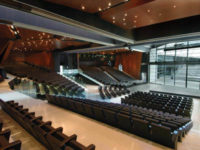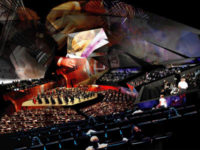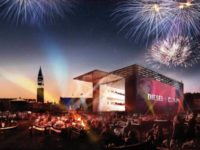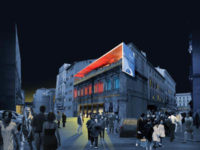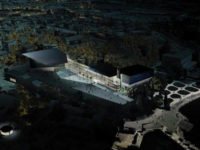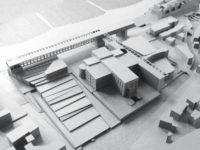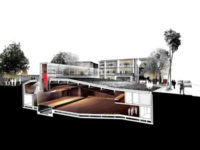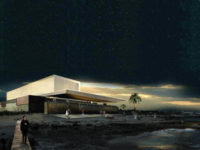Floating Movie Theatre
A floating, multimedia and itinerant water architecture
There are not that many places where it is possible to realise an itinerant cinema and theatre. No large work of architecture has the gift of ubiquity.
That is unless it is a work of floating architecture, as water consents the movement of large, incredibly heavy buildings and structures.
Yet not all waters are suitable: not the sea with its coasts pounded by waves and wind, but certainly rivers, estuaries, lagoons and lakes.
The Venetian Lagoon in particular. Vast and for the most part urbanised, it appears to be the ideal context for experimenting with a floating Cinema/Theatre. A structure that can be moored in different places according to the seasons: at the Arsenale, in the centre of the city, during Carnival; at the Lido during the International Film Festival in September; at the service of the tourist lidos of Treporti during the summer; in Marghera at the edge of the terra firma or in San Giuliano Park in the winter, serving the Venetian inland areas.
Hence it must be a ductile work of floating architecture, capable of easily adapting to different sites, and it must feature a shallow draught (less than 3 metres) in order to pass through the canals of the lagoon.
It must be a floating theatre machine, capable of opening up and closing back down.
Similar to a “ferry boat” it must be able to open at the stern to welcome visitors, and at the bow to expose the stage toward the water. It should offer the boats of Venetians and tourists a waterborne spectacle, similar to the century-old tradition of the Festa del Redentore: the most important event of the “Serenissima di Venezia” that employs floating structures that are part building and part boat, hybrid works of architecture accompanying the most popular of events.
The floating Cinema/Theatre can host up to 1,200 people as an indoor cinema and more than double this number when opened up toward the water. It can host a 2,000 square metre restaurant on the roof of the cinema, for receptions and meetings.
It must be easy to tow, becoming a white architecture that opens and closes on the water.

















